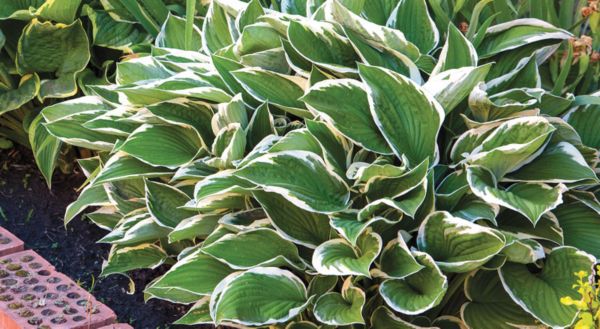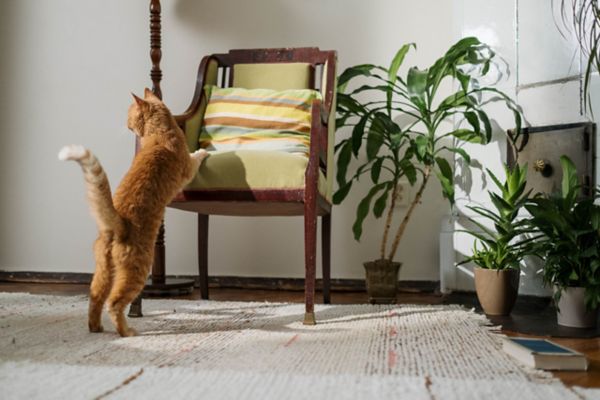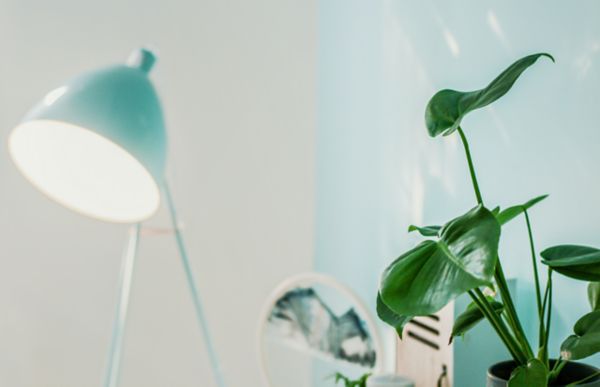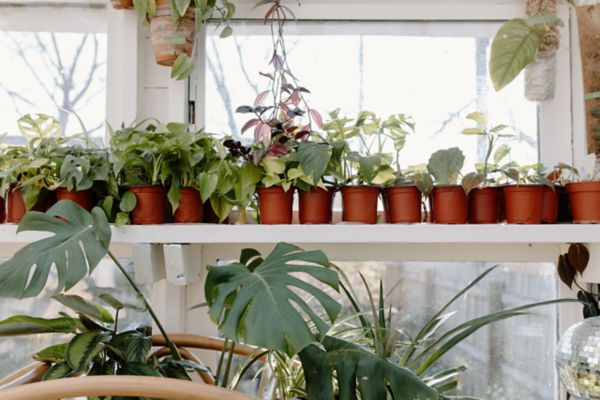How to Grow Begonia
Authored by Leah Chester-Davis
Begonias are a popular plant, readily available in your garden center, and a tried-and-true choice when it comes to adding beautiful foliage and color to a shady area in the garden or to enjoy indoors as a houseplant. Begonias derive from a tropical climate so they are typically grown as an annual outdoors in most gardening zones as most cannot withstand freezing temperatures.
Begonias come from a big family. The genus Begonia includes more than 2,000 species. Begonias are favored for their striking foliage, which can be various shades of green, bronzy browns, or maroons, and many have interesting patterns. Others are favored for their flowers, which range from shades of white, yellow, and orange, to pinks and reds, depending on the hybrid.
These plants range from 6 to 24 inches in size. Some have a small, mounding habit. Others grow tall. There are several types available and some of the more popular include wax, tuberous, cane, and rhizomatous. For a perennial option, consider hardy begonias.
About begonia
| Botanical name: | Begonia |
| Common name: | Begonia |
| Plant type: | Annual in most zones; houseplant |
| Size: | 6 to 24 inches, depending on species and cultivar |
| Sun exposure: | Shade |
| Soil type: | Organically rich, well-drained |
| Soil pH: | 5.5 to 6.5 |
| Hardiness zones: | Houseplant; outside in frost-free seasons |
| Average first frost: | Varies by region |
| Average last frost: | Varies by region |
| Container friendly: | Yes |
| Beginner friendly: | Yes |
Growing
Begonias do best in shady or partial shade locations. They can tolerate the morning sun, but the afternoon sun is too harsh for them. According to Clemson Extension, wax begonias are an exception. They can handle full sun, and wax begonias with bronze foliage do better in sun than the green varieties. Well-drained, moist soil that has plenty of organic matter is a must for these plants as they are susceptible to root rot.
Begonias can be started indoors from seed and then transplanted outdoors but they typically take several weeks. Small plants are readily available in the garden center.
When growing indoors as houseplants, use a quality potting mix. Use a container that has drainage holes. Do not allow water to stand in the saucer under the container.
Well-drained, moist soil that has plenty of organic matter is a must for these plants as they are susceptible to root rot.
Types of begonias
Wax begonia
Wax begonia, sometimes referred to as bedding begonia or wax leaf begonia, is a compact plant with a mounded habit. Its name comes from the waxy, succulent-like leaves that range from green to bronze in color. Small clusters of blooms in various colors accent the plant, typically from spring to fall frost.
Tuberous begonia
Tuberous begonias produce tubers, hence their name. The tubers can be dug up at the end of the season and stored in a cool, dry place until the next outdoor growing season. They boast the largest flowers and the widest ranges of colors, including bicolor options. Their exquisite blooms are large with multiple petals and shapes.
Cane begonia
Cane begonias at one time were referred to as “angel wings” because each leaf was shaped like a wing. Their foliage is dramatic and some of the more popular cultivars have silvery spotting on the green leaves with purple accents and undersides. They have a tall growth habit and pendant clusters of blooms. According to the American Begonia Society, this is a great plant to help build confidence in the new gardener.
Rhizamatous begonia
Rhizomatous begonias have underground rhizomes. This type typically has a mounding habit and striking foliage that may have intricate patterns. They are available in many foliage colors and textures. They range in size from miniatures to ones with gigantic leaves. Rex begonias are some of the more popular and commonly available of this type.
Hardy begonia
Hardy begonias (Begonia grandis) are perennial species that may survive outdoors in zones 6 to 9. They are favored for woodland gardens and grow to about 2 feet tall and wide. They lend color and texture to the shade garden with both their foliage and clusters of delicate flowers from midsummer to early autumn. They will die back to the ground in the winter.
Planting
When planting outside, wait until the danger of frost has passed. Work the soil so that it is well-drained. If needed, mix compost into the soil to help good drainage. Incorporate fertilizer into the soil when planting (see recommendation below). Plant in a location where they receive bright light but not direct sunlight, which can burn the foliage. Several plants placed together in a bed create a beautiful mass. Space plants about 12 inches apart to give them room to grow. In containers they can be planted closer together.
Water on a regular basis but don’t overwater. Begonias do not like wet feet. Avoid overhead watering and water at the plant's base, preferably early in the day. This helps avoid fungal leaf diseases.
Avoid overhead watering and water at the plant's base, preferably early in the day.
Fertilizing
- Minnesota Extension recommends incorporating a general-purpose fertilizer with equal amounts of nitrogen, phosphorous, and potassium into the soil at the time of planting. Follow label directions.
- After planting, fertilize monthly using a fertilizer with a higher phosphorous than nitrogen content to promote new blooms. If growing for foliage only, continue using a balanced fertilizer.
Controlling Pests, Diseases, and Other Problems
- Fungal diseases such as powdery mildew can occur when foliage remains damp for long periods. Good air circulation and avoiding overhead watering helps reduce those problems. If necessary, fungicides can be used for treatment. Follow label directions.
- Thrips can transmit a virus that distorts leaves or causes black patches or wavy lines on leaves. Remove infected plants from the garden. While insecticidal soaps can be effective on many plants, begonias may be sensitive to them.
Harvesting and Storing
Tuberous begonias have a dormant phase so aren’t a good choice for a year-round houseplant (instead, try Rieger begonias, a cross between tuberous and wax) but tuberous begonias do produce tubers that can be dug at the end of the growing season and stored indoors in a cool, dry place until the next growing season. In fact, to enjoy this plant more than one season you will need to save the tubers as they will not survive winters in most places. Reduce watering and stop fertilizing at the end of August. Dig the tubers when the foliage starts to yellow. Cut the stems to about 2 to 4 inches and allow the tubers to dry indoors.
Storing
When tubers from tuberous begonias are completely dry, place in a box filled with vermiculite or wood shavings and store inside in a cool, dry, dark place.
After planting, fertilize monthly using a fertilizer with a higher phosphorous than nitrogen content to promote new blooms.
Expert Tips
- Get more bang for your buck by propagating cuttings. Simply cut about three inches off a branch, remove leaves from the bottom half of the cutting, and then place the cutting in water. When roots appear, plant the cutting in potting soil.
- The American Begonia Society is a great source for more on begonias.
Frequently asked questions
Are begonias suitable for hanging baskets?
Begonias are a lovely plant for hanging baskets with their pretty foliage and blooms. Depending on the size of your basket, the wax or tuberous types can be good choices. An ideal choice is a trailing begonia, which is perfectly suited for baskets with their stems and flowers that will spill over the basket’s edge. They make for a pretty display in shady spots.





